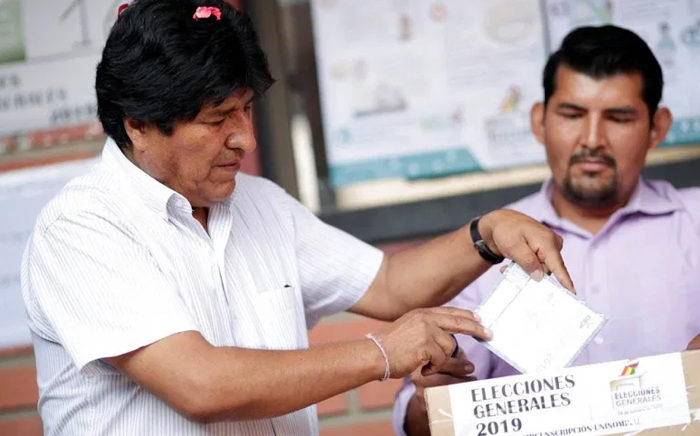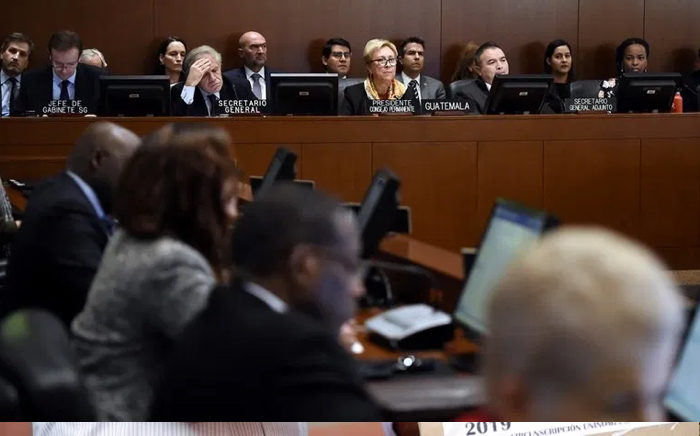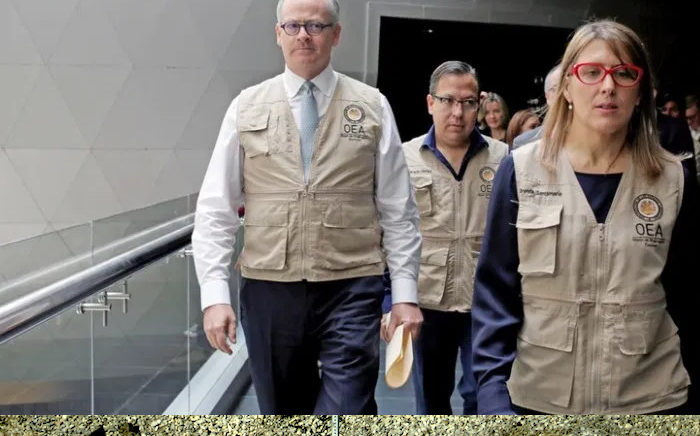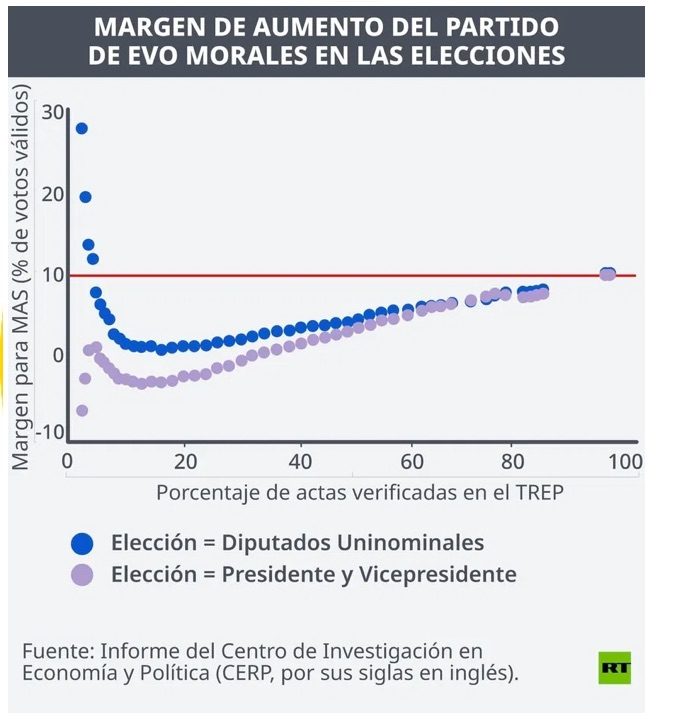One of the research papers is entitled 'What happened in the vote count of the 2019 elections in Bolivia? The role of the OAS Electoral Observation Mission' and was carried out by the Center for Research in Economics and Politics ( CEPR ).
This 18 page document summarizes the statistical analysis of the electoral results and the minutes of the general elections of last October 20 in Bolivia, which "does not show evidence of irregularities or fraud that has affected the official result that gave a first round victory to President Evo Morales."
According to the study prepared by Guillaume Long, David Rosnick, Cavan Kharrazian and Kevin Cashman, the OAS Electoral Observation Mission (MOE) supported a "post-election narrative without evidence" that referred to alleged inconsistencies in the process.
The Washington-based CEPR was founded by economists Dean Baker and Mark Weisbrot and includes as consultants the Nobel Prize in Economics winners Robert Solow and Joseph Stiglitz, among other specialists.
Understanding the TREP
In the Bolivian electoral system there are two mechanisms for scrutiny that work in parallel: one of rapid counting or Transmission of Preliminary Electoral Results (TREP), which both Bolivia and other countries have used following the recommendations of the OAS, and the Official Counting of the Votes or official calculation, legally binding according to Bolivian law.
As explained, the TREP is managed jointly by a private company and by the Civic Registry Service (SERECÍ). Its function is to deliver fast, non-binding and partial results on the night of the elections, unlike the official calculation.

Experts state that this pause was planned by the Supreme Electoral Tribunal, which had announced a week before the elections that it would announce the results of the rapid count after having verified at least 80% of the preliminary counts.
Objections to the OAS report
The MOE said one day after the elections, in a press release, "its deep concern and surprise at the drastic and difficult to justify change in the trend of preliminary results [of the quick count] known after the polls close".
Until the transmission of 83.85% of the minutes, Morales had 45.71% of the votes, while Carlos Mesa, 37.84%, which meant a difference of 7.87 percentage points between both candidates. That is, until that moment avoiding the second round was not assured. However, this result was modified as the results were scrutinized.
Three days after the elections, the director of the MOE, Gerardo de Icaza, read his preliminary report before the Permanent Council of the OAS in which he stated that "the changes in the TREP trend were difficult to explain and did not coincide with the others available measures".
Analysts believe that "the mission did not provide evidence supporting these statements that suggest that the quick count could be incorrect or 'difficult to explain', so they conclude that:
- The results of the quick count for 83.85% of votes transmitted are consistent with a projection of the final result that points Morales as winner with a victory of more than 10 percentage points.
- Neither the OAS mission nor any other party has demonstrated that there were widespread or systematic irregularities.
- Neither the quick count nor the official show significant changes in voting trends with respect to the final results.
- The official count did not stop for any significant period or undergo a significant modification following the TREP pause.
- It is not clear how the objections of the OAS mission regarding the quick count would affect the official one.
The OAS has affirmed that after the pause, Morales's difference over Mesa increased in such a way that the resigned president approached the ten percentage points necessary to avoid voting, so he expressed "his deep concern and surprise at the change drastic and difficult to justify in the trend of known preliminary results after the closing of the polls."
At this point, the authors of the report wonder if "this 'change in trend' is truly 'difficult to justify,'" to which they respond:
- Rural areas that have voted for Morales in the last thirteen years are slower in transmitting the data and sending the counting sheets to the electoral courts because they do not have access to the internet and are far from the cities. Therefore, their votes are counted in the final stage of the count.
- The results of the official count have a tendency similar to those of the rapid count.
- The gap between Morales and Mesa widened constantly as the count progressed. "It was a predictable and not surprising phenomenon."
Comment: The opposition counted on this predictable election timing. It was a tight window but an effective one.
OAS politicization
In the report, which concludes that the OAS accusations have had a significant influence on public opinion, reference is made to the government of Donald Trump and his allies, such as Republican Senator Marco Rubio, who has made statements "suggesting that the election was stolen."
The researchers believe that the politicization of an independent electoral monitoring process "becomes tangible" when the OAS "makes unsubstantiated statements that call into question the validity of an electoral count", which is "dangerous" in the context of "political polarization and the post-election political violence that has taken place in Bolivia".

The result did not change
Another of the analyses entitled 'Evidence against fraudulent votes has been decisive in the election of Bolivia in 2019′ was presented by Walter Mebane, professor of the departments of Political and Statistical Sciences of the University of Michigan and one of the world's experts in electoral fraud.
In the text, Mebane explains that "there is evidence that fraudulent votes in the elections were not decisive to the result", after the use of the Eforensics model, which is the application of scientific methodology to computer media to establish factual information or provide expert opinions for legal proceedings.
This statistical model utilizes the idea that "frauds" occur when a party wins votes for a combination of votes obtained from "fabricating" abstentions and "stealing" votes from opposing parties.
This work showed that there were presumably "fraudulent" counts in 274 of the 34,551 tables set up by the elections in Bolivia.
The letter clarifies that the Eforensics model is new and "with capabilities that have not yet been fully understood", so, although it resembles the counting of the electoral system, it can classify some votes as fraudulent without necessarily being so.
Mebane compares the statistical irregularities that could have indicated fraud, without having changed the final results, in elections in Honduras, Turkey, Russia, Austria and Wisconsin (USA) by analyzing them with the Eforensics model.
Results
According to the final results, Morales, of the Movement To Socialism (MAS), obtained 47.08% of the votes, while Mesa, of the conservative Community Community party, achieved 36.51%. Given the margin of more than 10 percentage points, which represent 648,439 votes, the president achieved the victory without needing a second round.
In the 342 municipalities in Bolivia, the MAS won in 289, which is equivalent to more than 85% of the total.
In the Plurinational Legislative Assembly, the MAS obtained 21 representatives before the Senators Chamber, which is composed of 36 seats, so it obtained an absolute majority.
As for the Chamber of Deputies, composed of 130 legislators, the official movement obtained 68 seats, so it also has an absolute majority.





Comment: Evo Morales was set up for defeat and elimination. The consequence of this coup has sent Bolivia into chaos - and the takeover is now unfolding according to plan. Does it make a difference that Morales truly won the election? Only as a historical account. The remodeling of Bolivia, courtesy the Western hydra, is well underway.